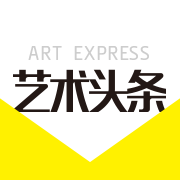
Frances Lehman Loeb Art Center makes major acquisition with 18-century Japanese scroll painting
2014-11-19 17:27:06 未知
POUGHKEEPSIE, NY.- The Frances Lehman Loeb Art Center, Vassar College’s art museum, recently made a major acquisition: Pasturing Horses, an eighteenth-century scroll painting by Japanese artist Soga Shohaku.
The painting is a key addition to the Art Center’s impressive collection. James Mundy, the Anne Hendricks Bass Director of the Art Center, said, “The size, quality and expression found in this work make it among the very best available.” Shohaku is one of the three key mid-Edo period painters in Kyoto known as “The Eccentrics.” The other two artists of this group, Ito Jakuchu and Nagasawa Rosetsu, are already represented in the Center’s collection. The acquisition of this painting is “a capstone for the Center’s Japanese collection,” Mundy added.
Felice Fischer, the Philadelphia Museum of Art’s curator of Asian art, concurred. “Pasturing Horses is a showcase for Shohaku’s skills: his finely controlled brushwork, his wonderful sense of humor, and his ability to capture a whole world even on a relatively small-scale surface. His marvelous depiction of the horses’ movement and the individual expressions of the grooms speak volumes about Shohaku’s creativity.”
The painting became known to scholars in 2003 and has been exhibited two times, first in the Shohaku retrospective exhibition in April, 2005 at the Kyoto National Museum. It was later included in the December 2005 exhibition Traditions Unbound, at the Asian Art Museum in San Francisco. It is currently on view at the Art Center and will remain so through mid-December, providing a rare opportunity for the public to see this major work.
Pasturing Horses started its existence as a pair of kobusuma, on sliding cupboard doors. After being removed from the door frames, they were combined and mounted in the scroll format. “When one looks carefully, one sees the repairs where the two round screen pulls once were,” said Mundy. Even though the paintings were relatively small ones, the artist signed his name prominently. “The subject of the painting is Tartars training or pasturing horses,” Mundy explained. “It stems from a long tradition of depiction in East Asian painting. Tartars were exotic and somewhat of a danger to the Chinese and even Japanese and their portrayal usually emphasized their ‘barbarism.’ In Shohaku’s depiction they take on an exaggerated dynamism as they struggle to tame their very wild steeds. This is a typical example of Shohaku’s sense of humor and, even, the absurd.”
Karen Hwang-Gold, assistant professor of art at Vassar, noted, “Using this single painting, one can teach a volume about Chinese Song, Yuan, and Ming landscape and narrative painting, as well as Japanese narrative and landscape traditions from tenth- and fifteenth- centuries, respectively. It is a tremendous gift to our students and the community.”
(责任编辑:王维)
注:本站上发表的所有内容,均为原作者的观点,不代表雅昌艺术网的立场,也不代表雅昌艺术网的价值判断。

 张瀚文:以物质媒介具象化精神世界
张瀚文:以物质媒介具象化精神世界 吕晓:北京画院两个中心十年 跨学科带来齐白石研究新突破
吕晓:北京画院两个中心十年 跨学科带来齐白石研究新突破 OCAT上海馆:参与构建上海艺术生态的十年
OCAT上海馆:参与构建上海艺术生态的十年 “纤维”提问2022:存在何“缓”?
“纤维”提问2022:存在何“缓”?
全部评论 (0)